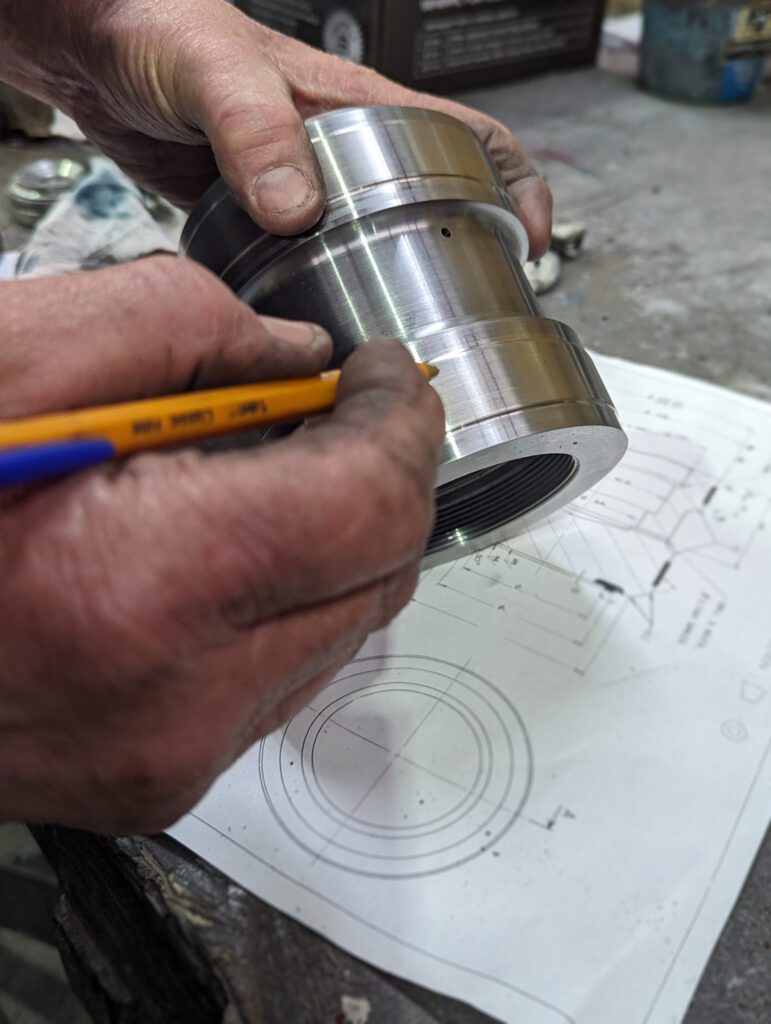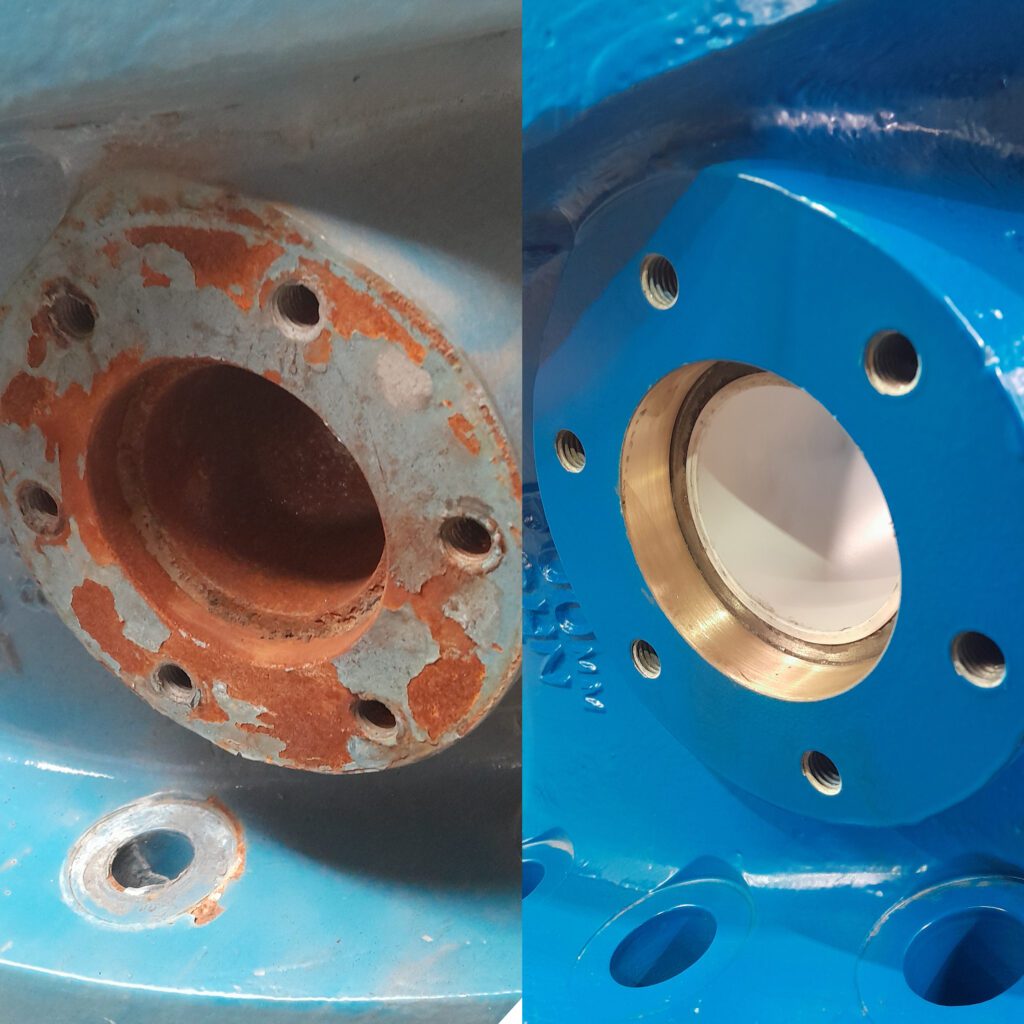Hear are our top 7 benefits of valve reconditioning. In both industrial settings and day-to-day appliances, valves play an essential role in controlling the flow of fluids and gases. Whether you’re a seasoned professional or a customer unfamiliar with the intricacies of machinery, the function of valves is critical to the smooth running of your systems. However, like all mechanical parts, valves are vulnerable to wear and tear over time. This degradation can lead to safety hazards, production delays, and in worst cases, total system failures. A damaged valve in a hydraulic system, for example, can completely halt operations, causing costly downtime.
Given how crucial valves are to the overall health of your machinery, the decision to either replace or repair them becomes critical. While replacing a valve may seem like the simplest solution, it can be costly, time-consuming, and unnecessary. Instead, valve reconditioning and repair offer a highly effective alternative that can save you time, money, and stress.
Top 7 benefits of valve reconditioning & repair
1. Significant Cost Savings
Valves are integral components in a wide range of industries, from manufacturing and energy to agriculture and transportation. However, their cost can be steep, especially for specialised valves used in niche applications or complex systems. The replacement of a single valve can become an expensive endeavour, particularly if multiple units are affected by wear or malfunction.
Reconditioning and repair offer a compelling alternative, often at a fraction of the cost. Industry research suggests that repair costs are typically 30%–50% less than the cost of replacement, depending on the extent of the damage. For industries with hundreds of valves in operation, these savings can add up quickly, making valve repair a smart financial decision, especially in the long run.
2. Faster Turnaround to Minimise Downtime

In today’s fast-paced industries, time is money. Any unplanned downtime due to faulty equipment can lead to missed deadlines, reduced productivity, and frustrated customers. Sourcing a new valve can take weeks, particularly with global supply chain disruptions and material shortages slowing delivery times.
Reconditioning a valve, on the other hand, is often a much quicker process. Specialist technicians can identify the problem, fix the faulty components, and return the valve to service far more rapidly than waiting for a replacement to arrive. In industries like oil and gas or power generation, where any downtime can lead to significant financial losses, a quicker repair or reconditioning process becomes invaluable.
3. Extended Valve Lifespan for Long-Term Use
Valve reconditioning is not just about fixing what’s broken; it’s about preventing future issues and extending the life of your equipment. Skilled technicians can restore the valve to its original specifications or even improve its durability by addressing areas prone to future failure. Through processes such as welding worn sections, remachining critical surfaces, and replacing worn-out seals, reconditioning experts ensure that your valve performs optimally for many more years.
This proactive approach to valve maintenance reduces the frequency of replacements, saving you from having to purchase new equipment as often. It also enhances the reliability of your systems, ensuring your operations continue to run smoothly with fewer unexpected breakdowns.

4. Improved Safety and Reduced Risk of Shutdowns
In industrial environments, valve failure can lead to far more than just an operational inconvenience—it can pose serious safety risks. Valves are often responsible for controlling dangerous fluids or gases, and a malfunction can result in leaks, explosions, or contamination of the working environment.
By repairing and reconditioning your valves, you’re ensuring they continue to operate safely and effectively. This can help you avoid potential hazards, regulatory violations, and costly shutdowns. In high-stakes industries like chemical processing or energy production, this added layer of safety is vital to protecting both your workforce and your assets.
5. Eco-Friendly and Resource-Conscious Solution
With growing awareness of environmental sustainability, industries are increasingly looking for ways to reduce waste and conserve natural resources. Valve reconditioning is an eco-friendly solution that aligns with these goals.
Valves are often made from valuable materials such as stainless steel, alloys, and other specialised metals. By opting for repair or reconditioning, you’re not only cutting down on the resources needed to produce a new valve but also reducing the environmental impact associated with manufacturing and shipping new products. Additionally, reconditioning limits the amount of waste sent to landfills, contributing to a more sustainable, circular economy.
6. High Salvageability: Most Valves Can Be Repaired
One of the key benefits of reconditioning is that the majority of valves can be repaired and restored to full functionality. In fact, experts estimate that around 90% of damaged valves are salvageable. In many cases, the issue lies in a single component, such as a seal or gasket, rather than the valve itself. This makes reconditioning a highly feasible option.
Before going down the replacement route, it’s worth consulting with a valve specialist to assess whether repair is possible. The repair process is often much simpler and quicker than sourcing a brand-new valve, saving you the headache of long lead times and hefty costs.
7. Comprehensive, Specialist Service
Valve reconditioning is a specialised process, and the good news is that experts offer a full, one-stop service. Specialists will handle everything from diagnosing the issue to repairing the valve, testing its performance, and ensuring it is restored to its optimal working condition. They’ll also let you know if a valve is beyond repair and advise on the most cost-effective replacement options.
This comprehensive approach ensures you get the best possible outcome without having to navigate the complex process of finding replacement parts or figuring out the cause of failure on your own. With professional expertise at hand, you can rest assured that your valves are in safe hands.
Which Option is Best for You?
Ultimately, the best course of action depends on your specific situation. Factors like time constraints, budget, and safety requirements all play a role in the decision-making process. While there are instances where valve replacement may be necessary, in most cases, reconditioning or repair is the smarter, more economical choice. It saves you time, money, and reduces the risk of operational disruptions.
Is Reconditioning and Repair Worth It?
The answer is a resounding yes. In addition to the cost savings, reduced downtime, and extended valve life, valve reconditioning is an eco-conscious, efficient solution that helps ensure the continued safety and performance of your equipment. With the current market challenges—ranging from skilled labor shortages to material supply disruptions—reconditioning is not only a smart choice but often the best choice.
Get Expert Help from John Valves
While it’s possible to attempt valve repairs yourself, the process is complex and can lead to further damage or prolonged downtime if not done correctly. Valve reconditioning requires the right expertise, tools, and testing facilities. That’s where professionals come in. At John Valves, we specialise in valve repair and reconditioning, offering end-to-end service to ensure your valves are back in operation quickly and safely.
Contact us today to discuss whether reconditioning is right for you and get expert advice on your next steps. We’re here to help you keep your operations running smoothly and efficiently.

